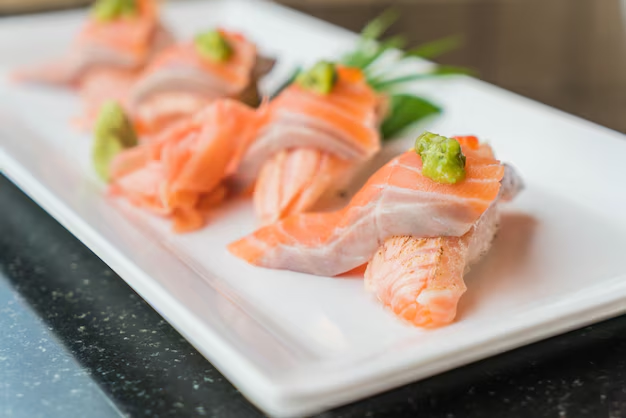Keeping Your Shrimp Fresh: The Ultimate Guide to Shrimp Storage
Shrimp is a delightful addition to any meal, whether you’re preparing a lavish seafood feast or a simple family dinner. Yet, while its appeal is undeniable, ensuring its freshness is paramount to enjoying its flavor without worry. How long can shrimp really stay fresh in the refrigerator? Let’s dive in to uncover the basics of shrimp storage, explore insightful practices, and learn how to maximize the shelf life of your seafood treasure.
🦐 The Basics of Storing Shrimp in the Refrigerator
Shrimp are a delicate seafood, demanding proper storage to maintain their freshness. When stored correctly in the refrigerator, shrimp can typically stay fresh for 1 to 2 days. However, this timeframe can vary depending on how the shrimp are handled post-purchase and the conditions in your refrigerator.
Why Freshness Matters
- Flavor and Texture: Fresh shrimp have a firm texture and sweet flavor. As they sit, both decline quickly.
- Safety Concerns: Spoiled shrimp can cause foodborne illnesses, underscoring the importance of timely consumption.
- Cost Efficiency: Proper storage prevents spoilage and waste, saving money and ensuring fewer trips to the grocery store.
Recognizing Fresh Shrimp
Before you even think about storage, identifying fresh shrimp is crucial:
- Smell: Fresh shrimp should smell mild, similar to the ocean. A strong or sour odor indicates spoilage.
- Appearance: Look for translucent, firm flesh without any discoloration.
- Texture: Fresh shrimp will feel firm to the touch; avoid shrimp that feel slimy or mushy.
📦 Effective Storage Techniques
Getting the most from your shrimp involves understanding and implementing a few storage strategies:
Preparing Shrimp for Storage
Rinse and Dry: Begin by rinsing the shrimp under cold water to remove surface bacteria and impurities. Pat them dry with paper towels to prevent sogginess.
Proper Containers: Use an airtight container or a plastic bag with as much air squeezed out as possible. This setup curtails moisture and ensures that external odors don't permeate.
Optimizing Refrigerator Conditions
Temperature Settings: Set your fridge to 32°F to 38°F. Ensure that this section of the fridge isn’t subject to temperature fluctuations, which can hasten spoilage.
Placement in the Fridge: Store shrimp in the coldest part of your refrigerator, typically near the back of the bottom shelf.
Ice Method
For those with extra diligence, storing shrimp on ice, even in the fridge, extends freshness. Place ice in a bowl, lay shrimp on top, and put the bowl in a deeper tray to catch melting water. Be sure to replace the ice regularly.
🕵️♂️ Determining Freshness Over Time
Learning the signs of spoilage can save you from a disappointing meal or worse:
Signs Shrimp Has Gone Bad
- Discoloration: Black spots or a faded pink/orange hue are warning signs.
- Odor: A strong ammonia-like smell is a clear indication.
- Texture: Slimy shrimp shouldn’t be consumed and can pose health risks.
Trust Your Senses
When in doubt, rely on your senses. If any aspect of the shrimp’s smell, look, or texture seems suspect, it’s better to err on the side of caution.
❄️ The Freezing Alternative
For those planning to use shrimp later than the two-day window, freezing is an excellent option.
How to Freeze Shrimp
- Preparation: Rinse and dry the shrimp as if refrigerating.
- Storage: Place them in a freezer-safe bag. Even better, use vacuum-sealed bags if you have access to a vacuum sealer.
- Label and Date: Always label and date your bags to keep track of storage time.
Shelf Life in the Freezer
Frozen shrimp can maintain quality for up to 3 to 6 months. Always thaw in the fridge or cold water to maintain texture and safety.
🍤 Cooking and Thawing Tips
Once your shrimp have either been refrigerated or revived from the freezer, here are steps to ensure they cook up perfectly:
Thawing
- Refrigerator Thawing: Ideal for maintaining quality, allowing shrimp to thaw slowly.
- Cold Water Thawing: Place shrimp in a sealed bag, submerge in cold water, and change the water every 30 minutes.
Cooking
When ready to cook, avoid overcooking shrimp, as they can become tough. Aim for a cooking duration of 2-3 minutes per side, with pink and opaque flesh as the target benchmark.
📋 Key Takeaways for the Perfect Shrimp Storage
Here’s a quick breakdown to ensure your shrimp is always in prime condition:
- 🕑 Refrigerator Life: Consume shrimp within 1-2 days.
- ❄️ Freeze for Longevity: Lasts 3-6 months in the freezer.
- ❌ Avoid Spoilage: Watch out for strange smells, discoloration, and slimy texture.
- 🌊 Proper Methods: Use airtight containers, ice, and the coldest parts of the fridge.
- 📌 Plan Ahead: Always label and date shrimp, whether refrigerating or freezing.
By following these practices, you not only preserve the vibrant taste of shrimp but also ensure it's a safe and enjoyable part of your meals. Whether you’re a seafood aficionado or an occasional dabbler, understanding the nuances of shrimp storage emboldens your culinary adventures. Trust your instincts, practice good storage habits, and savor the savory delights that shrimp has to offer.
